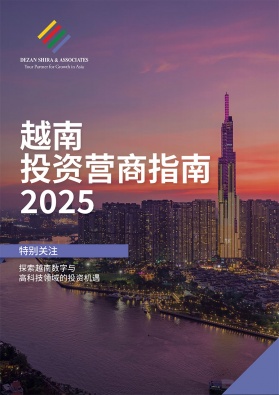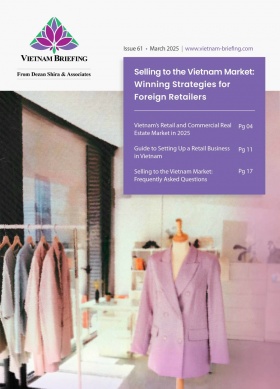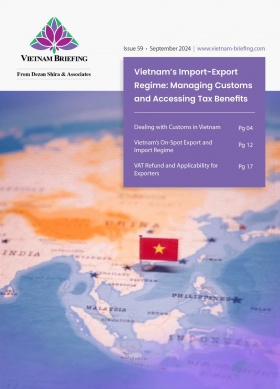Understanding the US Tariff List: Implications for Vietnam
In an unexpected move, the administration of US President Donald Trump announced it would impose a “reciprocal tariff” rate of 46 percent on Vietnam’s imports. As developments related to this news unfold, we provide preliminary evaluations of the tariff plan’s impact on Vietnam’s trade and economy.
What happened?
On April 2, 2025, President Trump shocked the world with his administration’s list of tariffs on more than 180 countries and territories. This list features two columns: one presents the tariff rates that the White House claims other countries enforce, while the other outlines the US’s “discounted reciprocal tariffs.” In other words, the first column serves as the basis for the reciprocal tariffs listed in the second column.
In the case of Vietnam, the Trump administration claimed that US exports to the market are charged a 90 percent tariff rate. The administration claims that this high rate has already weighted currency manipulation and trade barriers.
Accordingly, the US plans to impose an exceptionally high reciprocal tariff rate of 46 percent on imports from Vietnam, which is scheduled to take effect on April 9. Examining the list, it is evident that Vietnam’s rate is considerably higher than that of many of its export competitors, such as Bangladesh’s 37 percent rate and Thailand’s 36 percent rate. In Southeast Asia alone, Vietnam’s rate is only lower than that of Laos and Cambodia, which are 48 and 49 percent, respectively.
|
Preliminary List of US Reciprocal Tariffs* |
||
|
Country |
Tariffs Charged on U.S. Goods |
Reciprocal Tariff |
|
Saint Pierre and Miquelon |
99% |
50% |
|
Cambodia |
97% |
49% |
|
Laos |
95% |
48% |
|
Madagascar |
93% |
47% |
|
Vietnam |
90% |
46% |
|
Sri Lanka |
88% |
44% |
|
Myanmar (Burma) |
88% |
44% |
|
Syria |
81% |
41% |
|
Bangladesh |
74% |
37% |
|
Serbia |
74% |
37% |
|
Botswana |
74% |
37% |
|
Reunion |
73% |
37% |
|
Thailand |
72% |
36% |
|
China |
67% |
34% |
|
Taiwan |
64% |
32% |
|
Indonesia |
64% |
32% |
|
Switzerland |
61% |
31% |
|
Libya |
61% |
31% |
|
South Africa |
60% |
30% |
|
Nauru |
59% |
30% |
|
Pakistan |
58% |
29% |
|
Norfolk Island |
58% |
29% |
|
Tunisia |
55% |
28% |
|
Kazakhstan |
54% |
27% |
|
India |
52% |
26% |
|
South Korea |
50% |
25% |
|
Japan |
46% |
24% |
|
Malaysia |
47% |
24% |
|
Vanuatu |
44% |
22% |
|
Côte d’Ivoire |
41% |
21% |
|
European Union |
39% |
20% |
|
Jordan |
40% |
20% |
|
Nicaragua |
36% |
18% |
|
Zimbabwe |
35% |
18% |
|
Israel |
33% |
17% |
|
Philippines |
34% |
17% |
|
Malawi |
34% |
17% |
|
Norway |
30% |
15% |
|
Chad |
26% |
13% |
|
Equatorial Guinea |
25% |
12% |
|
Source: White House |
||
*Note: The White House also announced that 95 other countries and territories will be subject to 10 percent tariffs, including the UK, Brazil, Singapore, Chile, Australia, Turkey, UAE, New Zealand, and Argentina.
US report on Vietnam’s tariff and tax regime
The 2025 National Trade Estimate (NTE), released on March 31 by the Office of the US Trade Representative (USTR), reports that Vietnam’s average most-favored nation (MFN) applied tariff rate was 9.4 percent in 2023, including:
- 17.1 percent for agricultural products; and
- 8.1 percent for non-agricultural products.
The report also highlights that, although most US exports to Vietnam face tariffs of 15 percent or less, consumer-oriented food and agricultural products still encounter higher rates. Vietnam has reportedly raised the MFN applied tariff rates on several products, including:
- Sweeteners (such as fructose and glucose);
- Confectionery products;
- Shelled walnuts;
- Ketchup and other tomato sauces;
- Inkjet printers;
- soda ash; and
- Stainless steel bars and rods.
In 2016, Vietnam’s Law 106/2016/QH13 altered the taxation of imported alcoholic beverages by shifting the special consumption tax base from the import price to the sales price received by the importer. This change is believed to have raised the tax burden for US importers compared to domestic producers.
Reciprocal tariff calculations
According to the USTR, US reciprocal tariffs are based on the assumption that persistent trade deficits arise from a combination of tariff and non-tariff factors that inhibit trade from achieving balance. The US expects that these tariffs function by directly lowering imports.
Nonetheless, data suggested that it might have merely viewed America’s deficits relative to bilateral trade when determining reciprocal rates.
US trade deficits with Vietnam
Examining the growth trend of US trade deficits with Vietnam over recent history, it is evident that the figures have been steadily increasing since 2018, when the US-China trade war commenced. Vietnam is increasingly favored by companies seeking to diversify their production sources and mitigate risks associated with US trade conflicts with China.
The USTR reports that imports from Vietnam to the US reached US$136.6 billion in 2024, marking a 19 percent increase from 2023.
|
Vietnam’s Key Exports to the US, 2024 |
||
|
Items |
Value (US$) |
Proportion |
|
Total |
119,501,485,006 |
100.00% |
|
Computers, electrical products, spare-parts and components thereof |
23,201,555,610 |
19.42% |
|
Machine, equipment, tools and instruments |
22,052,523,094 |
18.45% |
|
Textiles and garments |
16,151,794,382 |
13.52% |
|
Telephones, mobile phones and parts thereof |
9,824,431,700 |
8.22% |
|
Wood and wooden products |
9,056,598,490 |
7.58% |
|
Foot-wears |
8,284,399,219 |
6.93% |
|
Other products |
8,111,464,983 |
6.79% |
|
Other means of transportation, parts and accessories thereof |
3,273,825,912 |
2.74% |
|
Plastic products |
3,081,809,424 |
2.58% |
|
Fishery products |
1,832,900,465 |
1.53% |
|
Handbags, purses, suit-cases, headgear and umbrellas |
1,802,632,964 |
1.51% |
|
Toys and sports requisites; parts and accessories thereof |
1,781,174,208 |
1.49% |
|
Iron and steel products |
1,331,044,294 |
1.11% |
|
Iron and steel |
1,318,963,272 |
1.10% |
|
Still image, video cameras and sparts thereof |
1,208,345,217 |
1.01% |
|
Cashew nut |
1,154,132,402 |
0.97% |
|
Source: Vietnam Customs |
||
|
Vietnam’s Key Imports from the US, 2024 |
||
|
Items |
Value (US$) |
Proportion |
|
Total |
15,102,669,219 |
100% |
|
Computers, electrical products, spare-parts and components thereof |
4,336,277,434 |
28.71% |
|
Other products |
1,580,331,721 |
10.46% |
|
Machine, equipment, tools and instruments |
1,099,999,051 |
7.28% |
|
Animal folders and animal fodder materials |
1,016,019,676 |
6.73% |
|
Plastics |
783,671,648 |
5.19% |
|
Cotton |
680,942,965 |
4.51% |
|
Chemicals |
637,544,790 |
4.22% |
|
Fruits and vegetables |
543,946,784 |
3.60% |
|
Pharmaceutical products |
512,534,682 |
3.39% |
|
Other means of transportation, parts and accessories thereof |
506,719,140 |
3.36% |
|
Source: Vietnam Customs |
||
How impactful is the new tariff on Vietnam’s trade?
According to data from Vietnam’s Ministry of Industry and Trade (MIT), the US has been Vietnam’s largest export market for many years. For the US, Vietnam stands as the 8th largest trading partner, contributing 4.13 percent of total export turnover to this market. In 2024, Vietnam specifically exported goods worth US$119.5 billion to the US, representing 29.5 percent of the country’s total export turnover. 16 categories of goods exported to the US that achieved an export turnover of US$1 billion or more.
In the first two months of the year, the US remained Vietnam’s primary export market. Export turnover to the US reached US$19.56 billion, accounting for 30 percent of the total national export turnover, marking a 16.5 percent increase compared to the same period last year.
Given how export-dependent Vietnam is, the new tariff is set to impact trade flows from the country. To explore how tariffs affect Vietnamese exports in detail, please refer to: Impact of Tariffs by President Trump on Vietnamese Exports
|
Vietnam’s Exports of Goods and Services, % of GDP |
|
|
Year |
Proportion of GDP (%) |
|
2013 |
66.81 |
|
2014 |
69.6 |
|
2015 |
72.93 |
|
2016 |
74.11 |
|
2017 |
81.77 |
|
2018 |
84.43 |
|
2019 |
85.16 |
|
2020 |
84.39 |
|
2021 |
93.86 |
|
2022 |
93.82 |
|
2023 |
87.18 |
|
Source: World Bank |
|
Implications and advisory for businesses
In the wake of the latest development, Dan Martin, an International Business Advisor at Dezan Shira & Associates based in our Hanoi office, calls for calm and further observation:
If implemented on the suggested scale, these tariffs would undoubtedly have a significant impact—particularly in industries such as textiles, footwear, and furniture, which are closely tied to the US market. Over the last two decades, these sectors have steadily expanded, and a 46 percent tariff would pressure profit margins, jobs, and order volumes. However, this is not a moment of crisis; it is a developing scenario.
It is essential to note that Vietnam has become significantly more diversified than it was before. The country has entered into free trade agreements with nearly all major global economies, including the EU, Japan, South Korea, the UK, and nations across ASEAN. Southeast Asia and Europe are already driving robust export demand, and many companies are eager to expand their presence in these markets. However, we are not there yet. The April 9 deadline for enactment is approaching, but no decisions are final. Similar to past tariff situations under the Trump administration, this current proposal can still be modified, postponed, or even withdrawn completely.
The Vietnamese government has promptly addressed US concerns by lowering tariffs on American goods and opening new sectors to US businesses. A high-level delegation, led by Deputy Prime Minister Ho Duc Phoc, will visit Washington from April 6 to 14 for additional discussions.
At this juncture, our advice is simple: stay informed, remain calm, and avoid making hasty judgments and decisions. Vietnam’s fundamental advantages remain intact: its solid fundamentals, regional access, and expanding trade relationships continue to position it as a crucial hub in global supply chains. We will diligently monitor the situation and offer guidance to our clients based on the emerging developments.
Also read: Opportunities Amid Tariff Risks: Vietnam Seeks Trade Balance with the US
About Us
Vietnam Briefing is one of five regional publications under the Asia Briefing brand. It is supported by Dezan Shira & Associates, a pan-Asia, multi-disciplinary professional services firm that assists foreign investors throughout Asia, including through offices in Hanoi, Ho Chi Minh City, and Da Nang in Vietnam. Dezan Shira & Associates also maintains offices or has alliance partners assisting foreign investors in China, Hong Kong SAR, Indonesia, Singapore, Malaysia, Mongolia, Dubai (UAE), Japan, South Korea, Nepal, The Philippines, Sri Lanka, Thailand, Italy, Germany, Bangladesh, Australia, United States, and United Kingdom and Ireland.
For a complimentary subscription to Vietnam Briefing’s content products, please click here. For support with establishing a business in Vietnam or for assistance in analyzing and entering markets, please contact the firm at vietnam@dezshira.com or visit us at www.dezshira.com
- Previous Article 中国制造业在越南的战略布局:关键地区分析与未来发展趋势
- Next Article Evolving Landscape of Vietnam’s Snack Market: Ample Opportunities for Businesses








